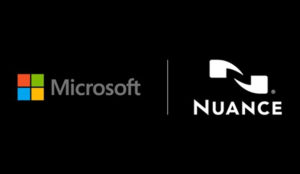
Salesforce.com has acquired InStranet for US$31.5 million, a transaction that includes the assumption of $4.2 million in cash on InStranet’s balance sheet.
This deal is grander in scale than any of Salesforce.com’s previous acquisitions; the company’s past purchases have been small one-off technology providers in niche areas.
InStranet not only fills a functional gap in Salesforce.com’s customer service feature set, but also brings to the table many large customers and a huge footprint in large contact centers around the world.
A provider of on-premise knowledge base management technology, InStranet differentiates itself by using a customer’s product purchase or geographical location to refine the answers that an automated system gives in response to a customer’s question, Al Falcione, senior director of product marketing at Salesforce.com, told CRM Buyer.
Categorizing Knowledge
Dimensions, the company’s tech platform, “allows users to categorize the corporate knowledge base into any number of dimensions,” Falcione said. “The search technology then looks across all of those dimensions to find the category and particular answer that is most relevant to that customer.”
Take, for example, the case of a cable customer who wants to find out why his service is spotty. He logs online and types in “poor reception.” A typical knowledge base application would call up any number of answers, most of which are not relevant to this particular search, Falcione said. The Dimensions platform, however, would automatically know to eliminate service reports that fall outside of the customer’s area.
Say a BlackBerry user cannot figure out why her e-mails are arriving several hours late. A search in a Dimensions-powered knowledge base application could pull up relevant connectivity information about her particular device.
Buying Expertise
Salesforce.com is adding this technology, which will become available next year, to its Service & Support applications. It will also be part of the Force.com platform.
The acquisition is a good move for Salesforce.com, which has been missing much of this functionality in its service offerings, Yankee Group analyst Sheryl Kingstone told CRM Buyer. Because knowledge management is such a complex space, it is often better to buy than build this particular feature, she added.
It is also an area of growing interest to companies deploying customer relationship management functionality, given the cost savings that self-service can deliver. A customer service call with a live agent costs $5.50 on average, estimates the Yankee Group.
At least 75 percent of customer contact centers will use a form of SaaS (Software as a Service) by 2013, Gartner researchers predict.
Acquisition Strategy
Although the InStranet acquisition is a departure from Salesforce.com’s smaller acquisition pattern, the company has made it clear that it would be willing to consider just about any deal that would support its larger go-to-market strategy, Kingstone noted.
Salesforce.com acquired Koral Technologies in March 2007 and then extended its Apex platform with the former Koral platform, renaming it “Apex Content.” Salesforce Content Exchange, one of the applications on that platform, was based on Koral’s content management system.
Salesforce.com acquired Kieden, a small software development company, in 2006. Its Google AdWords functionality enabled Salesforce.com to introduce Salesforce for Google AdWords later that year — an AppExchange mash-up that allows users to buy keywords and create ads directly within Salesforce.
Salesforce.com’s first acquisition was Sendia, a maker of wireless software delivery tools, which it bought for $15 million in 2006. Later that year, it extended its AppExchange network to mobile devices with the introduction of AppExchange Mobile, developed using proprietary software from Sendia.
Instranet’s acquisition does not affect Salesforce.com’s results for the second quarter of fiscal year 2009, which were released Wednesday.























































Is Salesforce.com the new ADP … or the next Datapoint?
What will happen if blue sky clears the cloud?
***
This headline recently appeared in several places across the Web:
"Salesforce.com Passes $1 Billion Annual Revenue Mark"
THIS IS NOT TRUE. I don’t know whether this material misstatement arose from media manipulation or an honest mistake, but it’s genesis is most likely this 20 August 2008 press release…
"Salesforce.com Announces Record Fiscal Second Quarter Results"
http://tinyurl.com/5m5mea
…the subheading of which claims:
"First Ever Software as a Service Company to Exceed $1 Billion Annual Revenue Run Rate"
THIS IS NOT TRUE, EITHER. "Software as a Service" is marketing technospin for "service bureau". And payroll processing giant ADP–another service bureau–exceeded not only a "run rate" but actual annual revenues of $1 billion in 1985:
"The original outsourcer, Automatic Data Processing…"
http://tinyurl.com/56y5tx
Yes, SalesForce.com did report revenues of $263 million for their most recent quarter. And yes, they have raised "FY09 Revenue Guidance to $1.070 – $1.075 Billion". But NO, Salesforce.com has NOT passed the "$1 Billion Annual Revenue Mark". And despite Cheerleader/CEO Marc Benioff’s effusive exuberance, some like Tiernan Ray do not share his enthusiasm:
"Salesforce’s Deferred Revenue Debacle"
http://tinyurl.com/6oagtp
Perhaps in an effort to meet ever-inflating investor expectations–a fire they themselves have fueled–Mr. Ray notes that Wedbush Morgan analyst Michael Nemeroff "…thinks Salesforce may be pushing customers to sign more multi-year subscription contracts by lower prices, which could be hitting deferred revenue." And reading that, for me, brought on a disturbing case of Datapoint deja vu:
http://tinyurl.com/gk77r
"By the early 1980s, Datapoint was a Fortune 500 company. Under immense pressure to increase sales figures, its sales representatives encouraged customers to place large orders at the end of the fiscal year, permitting the company to count the orders as revenue even though the money had not been received and, in some instances, the sold equipment had not yet even been produced…. When some of the customers went broke before paying their bills, Datapoint had to reverse sales or record substantial bad debts, which caused the company to lose $800 million of its market capitalization in a matter of a few months in early 1982. The U.S. Securities and Exchange Commission (SEC) ordered Datapoint to stop this practice."
Is Salesforce.com the new ADP … or the next Datapoint? Some say their business model is to take your watch and then bill you for the time. If so, what will happen to all those watches if blue sky clears the cloud?
Bruce Arnold, Web Design Miami Florida
http://www.PervasivePersuasion.com